あなたの風景に時代を超越した美しさのタッチを追加したいですか?多くのDIYSと請負業者は、複雑さが認識されているため、不規則なランダムなゆるい石を避けていることを発見しています。間違っていると、不安定な経路、不均一な表面、そして自然なもの以外の外観が生じます。
しかし、恐れないでください!このガイドは、プロセスをフォローの簡単なステップに分解し、プロジェクトが専門的に行われるようにします。適切な石の選択からモルタルの習得まで、見事なパティオ、通路などを作成する方法を学びます。トップソースストーンのような信頼できるソースから高品質の不規則な天然ランダムなゆるい石を選択すると、寸法精度、材料の完全性、美的卓越性が保証されます。
-
 ナチュラルスプリットフェイスグレークォーツランダムランダムなゆるい石の壁クラッディング
ナチュラルスプリットフェイスグレークォーツランダムランダムなゆるい石の壁クラッディング -
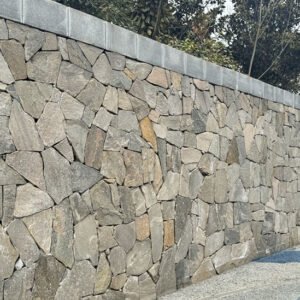 壁の覆い用の天然クォーツランダムな不規則な石パネルタイル
壁の覆い用の天然クォーツランダムな不規則な石パネルタイル -
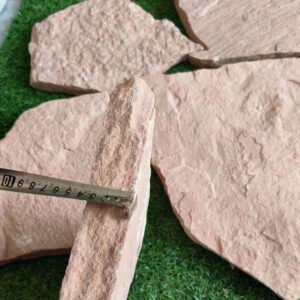 卸売ピンクの砂岩のランダムなゆるい石のクラッディング
卸売ピンクの砂岩のランダムなゆるい石のクラッディング -
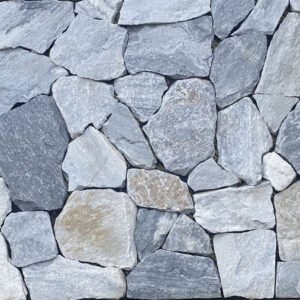 卸売青色のクォーツランダムランダムなゆるい石タイル壁の覆い
卸売青色のクォーツランダムランダムなゆるい石タイル壁の覆い -
 内部および外壁の覆いのための自然なランダムなゆるい石
内部および外壁の覆いのための自然なランダムなゆるい石 -
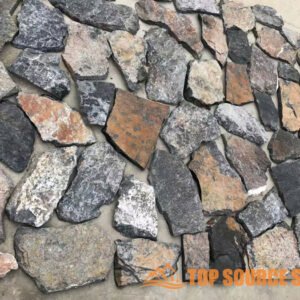 ランダムな外観天然石ゆるい石のベニヤの壁覆い飾り
ランダムな外観天然石ゆるい石のベニヤの壁覆い飾り -
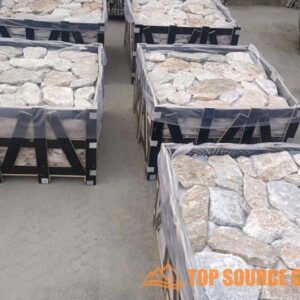 自然な不規則なランダムなゆるい石被覆ベニア
自然な不規則なランダムなゆるい石被覆ベニア -
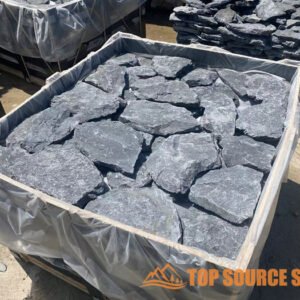 中国工場供給屋外の自然なランダムなゆるい石の壁クラッディングタイル
中国工場供給屋外の自然なランダムなゆるい石の壁クラッディングタイル -
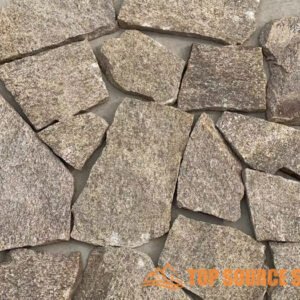 工場価格自然の外装ランダムなゆるい石の壁の覆い
工場価格自然の外装ランダムなゆるい石の壁の覆い -
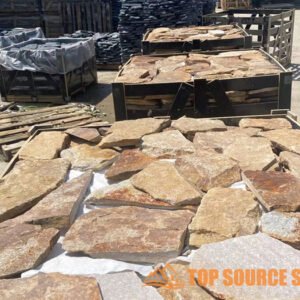 外側の黄色の粗いランダムなゆるい石の壁の覆い
外側の黄色の粗いランダムなゆるい石の壁の覆い -
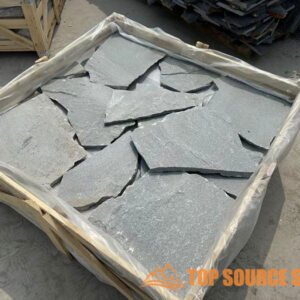 屋内と屋外のための自然なランダムなゆるい石の壁のクラッディングパネル
屋内と屋外のための自然なランダムなゆるい石の壁のクラッディングパネル -
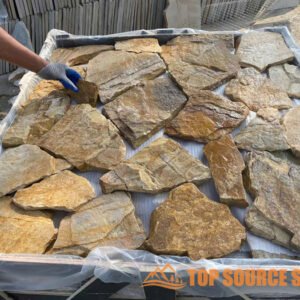 壁の装飾のための自然なゆるい石の壁
壁の装飾のための自然なゆるい石の壁
ランダムなゆるい石プロジェクトの計画:選択とデザイン
不規則な自然なランダムなゆるい石のプロジェクトを計画するには、美しく持続的な結果を確実にするためのいくつかの重要なステップが含まれます。景観の評価から材料の推定まで、成功するためには慎重な計画が不可欠です。この章では、石の選択、設計上の考慮事項、およびプロジェクトの範囲の定義に焦点を当てた初期段階を案内します。適切な計画は、費用のかかる間違いを回避し、あなたのビジョンが現実になることを保証します。
“ランドスケープデザインで不規則な自然なランダムなゆるい石を使用すると、全体的な美学を高め、周囲の環境を補完するユニークで自然なタッチを追加できます。”
景観の評価:土壌、排水、スペースの評価
石を選択する前に、風景を評価してください。土壌の種類を確認してください。粘土、砂、ロームですか?水があなたを損傷するのを防ぐためには、良い排水が重要です 石の取り付け。雨の間に水が流れる方法を観察して、潜在的な問題領域を特定します。また、利用可能なスペースを測定して、石で覆うエリアを決定します。これらの詳細を知ることは、適切な石を選択し、地面を効果的に準備するのに役立ちます。このステップはです “非常に重要です”、お見逃しなく!
風景の既存の機能を考えてください。あなたのデザインに影響を与える木、低木、または他の植物はありますか?これは、時間の経過とともに石の色と質感に影響を与える可能性があるため、さまざまな領域での太陽の暴露に注意してください。風景のユニークな特性を理解することで、自然の環境と調和するデザインを作成できます。
適切な石の選択:色、テクスチャ、および材料オプション
Selecting the right stone is a critical step in planning your project. Consider the color, texture, and material options available. Colors range from earthy browns and grays to vibrant reds and yellows. Texture can vary from smooth and polished to rough and rugged. Material options include granite, limestone, sandstone, and slate. Each type offers a unique aesthetic and level of durability. Top Source Stone offers a wide range of options to suit any project.
Think about the overall style you want to achieve. A rustic design might benefit from rough-textured, earthy-toned stones, while a modern design could incorporate smooth, gray stones. Visit Top Source Stone to explore various samples and find the perfect match for your vision. Their customization services ensure you get exactly what you need.
Design Layouts: Patterns and Placement for Visual Appeal
The layout of your stones can significantly impact the visual appeal of your project. Consider different patterns and placement options. A random pattern can create a natural, organic look, while a more structured pattern can add a touch of formality. Experiment with different arrangements to see what works best for your space. Take photos of your favorite layouts to help you visualize the final result. Proper planning is key.
Think about the spacing between the stones. A tight layout can create a solid surface, while a wider spacing can allow for ground cover or decorative gravel between the stones. Consider the function of the area you’re designing. A pathway might require a more stable, even surface, while a decorative area can allow for more creative freedom. Use Irregular Natural Random Loose Stone to give your project a unique touch.
Estimating Materials: Calculating Stone and Mortar Needs
Accurately estimating your material needs is crucial to avoid running out of stone or overspending. Measure the area you plan to cover and calculate the square footage. Use this measurement to determine how much stone you’ll need. Add a buffer of 10-15% to account for cuts and waste. Also, estimate the amount of mortar or gravel required to set the stones. Top Source Stone can provide expert advice on material estimation.
Consider the thickness of the stones when estimating materials. Thicker stones will require more mortar and may affect the overall height of the finished surface. Consult with a professional at Top Source Stone to ensure you have accurate measurements and material estimates. Their expertise can save you time and money in the long run. This ensures that you are not caught short half way through your project.

Essential Tools and Materials for Stone Installation
Preparing for a stone installation project requires gathering the right tools and materials. Having everything on hand ensures a smooth and efficient process. This chapter outlines the necessary tools, mortar, base materials, and jointing compounds needed for a successful installation. Being well-prepared is half the battle!
“Using the correct tools and high-quality materials is crucial for a durable and aesthetically pleasing Irregular Natural Random Loose Stone installation.”
Gathering Tools: Rubber Mallet, Trowel, Level, and Safety Gear
A rubber mallet is essential for gently tapping stones into place without damaging them. A trowel is used for applying mortar evenly. A level ensures that your stones are properly aligned. Safety gear, including gloves and eye protection, is crucial to protect yourself during the installation process. Having these tools readily available will make the job much easier. Don’t forget to protect your knees!
Additional helpful tools include a chisel for shaping stones, a measuring tape for accurate placement, and a wheelbarrow for transporting materials. Consider renting specialized tools if you’re tackling a large project. Always prioritize safety by wearing appropriate personal protective equipment (PPE). These simple steps make a big difference.
Mortar Selection: Choosing the Right Mix for Stone Adhesion
Choosing the right mortar is crucial for ensuring proper stone adhesion. Consider the type of stone you’re using and the environmental conditions. A polymer-modified mortar is often recommended for its superior bonding strength and flexibility. Pre-mixed mortars are convenient, but mixing your own allows for greater control over the consistency. Top Source Stone recommends quality mortar for long-lasting results.
Factors to consider when selecting mortar include its compressive strength, water resistance, and setting time. Ensure the mortar is compatible with the specific type of stone you’re using. Read the manufacturer’s instructions carefully and follow them precisely. Using the wrong mortar can lead to cracking and instability. This is no joke!
Base Materials: Gravel, Crushed Stone, and Sand
The base materials provide a stable foundation for your stone installation. Gravel is typically used as a sub-base for drainage. Crushed stone provides a level surface for the stones to rest on. Sand is used to fill in small gaps and create a smooth surface. Top Source Stone offers a variety of aggregates to suit your project needs. A solid base is key to a long-lasting installation.
Proper base preparation is essential to prevent settling and shifting of the stones. Compact the base materials thoroughly using a plate compactor or hand tamper. Ensure the base is level and well-drained. A poorly prepared base can lead to significant problems down the road. Take your time and do it right.
Jointing Compounds: Options for Filling Gaps and Enhancing Stability
Jointing compounds fill the gaps between the stones, enhancing stability and preventing weed growth. Options include polymeric sand, mortar, and epoxy-based jointing compounds. Polymeric sand is easy to install and provides flexibility. Mortar offers a more traditional look and greater durability. Epoxy-based compounds provide superior strength and water resistance. Choose the best option for your specific needs.
When selecting a jointing compound, consider its color, texture, and ease of application. Ensure the compound is compatible with the type of stone you’re using. Follow the manufacturer’s instructions carefully to ensure proper installation. Jointing compounds not only enhance stability but also improve the overall aesthetic of your project. Good jointing makes a big difference!
Recommended Tools and Materials for Stone Installation
| Tool/Material | 説明 | Purpose | 平均コスト | Top Source Stone Equivalent |
|---|---|---|---|---|
| Rubber Mallet | A hammer with a rubber head. | Tapping stones into place. | $15 – $30 | n/a |
| Trowel | A flat, pointed tool for spreading mortar. | Applying mortar evenly. | $10 – $20 | n/a |
| レベル | A tool for ensuring surfaces are horizontal or vertical. | Ensuring stones are aligned. | $20 – 50ドル | n/a |
| Polymer-Modified Mortar | A mortar mix with polymers for enhanced bonding. | Adhering stones together. | $15 – $25 per bag | Top Source Stone Premium Mortar |
| Crushed Stone | Graded aggregate for base preparation. | Creating a level and stable base. | $30 – $50 per cubic yard | Top Source Stone Base Aggregate |
| Polymeric Sand | Sand mixed with polymers for joint filling. | Filling gaps and preventing weed growth. | $20 – $30 per bag | Top Source Stone Jointing Sand |
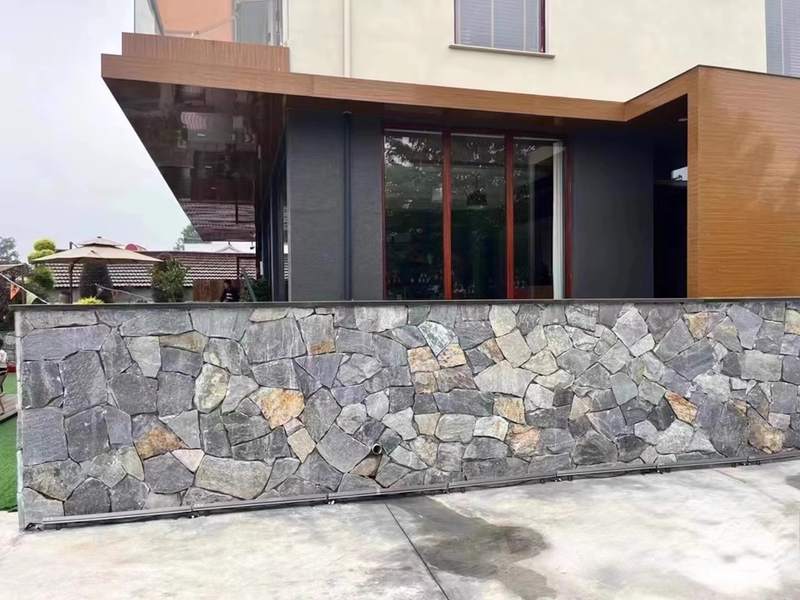
Site Preparation: Building a Solid Foundation
Proper site preparation is crucial for a stable and long-lasting Irregular Natural Random Loose Stone installation. A solid foundation prevents future shifting and ensures the longevity of your project. This chapter provides a detailed guide on preparing your site, including excavation, base layer installation, leveling, and drainage solutions. Getting this right is absolutely vital!
“A well-prepared site is the cornerstone of a successful irregular natural random loose stone installation, preventing future problems and ensuring a beautiful, durable result.”
Excavation: Removing Topsoil and Debris
The first step in site preparation is excavation. Remove all topsoil, grass, roots, and debris from the area. Excavate to a depth that allows for the base layer and the thickness of the stones, typically 6-8 inches. This ensures that the finished surface will be at the desired level. Use a shovel and wheelbarrow to remove the excavated material. This is a labor-intensive but necessary step.
Be sure to clear any underground utilities or obstacles before excavating. Contact your local utility companies to mark any buried lines. Consider the slope of the surrounding area to ensure proper drainage. Removing all organic matter prevents decomposition and settling, which can compromise the stability of your stone installation.
Base Layer: Laying and Compacting Gravel or Crushed Stone
After excavation, lay a base layer of gravel or crushed stone. This layer provides drainage and a stable foundation. Use a minimum of 4 inches of gravel or crushed stone, depending on the soil conditions and the intended use of the area. Spread the material evenly and compact it thoroughly using a plate compactor or hand tamper. Quality base materials from reliable suppliers, like Top Source Stone, are essential for stability.
Compacting the base layer is crucial to prevent settling. Overlap each pass with the compactor by at least 6 inches to ensure uniform compaction. Add water during compaction to help the material bind together. A properly compacted base layer will provide a solid foundation that will support the weight of the stones and prevent shifting.
Leveling: Achieving a Smooth and Even Surface
Achieving a smooth and even surface is essential for a professional-looking stone installation. Use a layer of sand or fine gravel to level the base layer. Spread the material evenly and use a level to check for any high or low spots. Add or remove material as needed to create a perfectly level surface. A smooth surface makes setting the stones much easier.
Use a long, straight board or a level to screed the surface. This will help you achieve a consistent and even plane. Check the level in multiple directions to ensure accuracy. A perfectly level surface will prevent uneven settling and ensure that the stones are stable and aligned. This requires patience, but it’s worth the effort!
Drainage: Ensuring Proper Water Runoff
Proper drainage is crucial to prevent water from damaging your stone installation. Ensure that the site has adequate drainage to handle rainwater and runoff. Consider installing drainage pipes or French drains to divert water away from the area. Slope the base layer slightly to promote water runoff. A well-drained site prevents water damage and prolongs the life of your installation.
Observe how water flows during rain to identify potential problem areas. Install drainage solutions in areas where water tends to accumulate. Ensure that the drainage system is properly connected to a suitable outlet. Ignoring drainage can lead to costly repairs down the road. Don’t be penny wise and pound foolish!
Site Preparation Material Costs
| 材料 | 説明 | Unit Cost | Estimated Quantity | Total Cost |
|---|---|---|---|---|
| 砂利 | 3/4″ crushed gravel for base layer. | $35/cubic yard | 5 cubic yards | $175 |
| Crushed Stone | 1/2″ crushed stone for leveling. | $40/cubic yard | 2 cubic yards | $80 |
| Sand | Fine sand for leveling surface. | $25/cubic yard | 1 cubic yard | $25 |
| Drainage Pipe | 4″ perforated drainage pipe. | $5/foot | 50 feet | 250ドル |
| Filter Fabric | Geotextile fabric for drainage. | $1/square foot | 100 square feet | 100ドル |

Step-by-Step Installation: Laying Irregular Stone for a Natural Look
Installing Irregular Natural Random Loose Stone requires careful attention to detail to achieve a natural and professional look. This chapter offers a step-by-step guide covering mortar application, stone placement, and jointing techniques. With the right approach, you can create a stunning landscape feature. This is where the rubber meets the road!
“Proper installation techniques are key to showcasing the natural beauty of irregular natural random loose stone, ensuring a durable and visually appealing finish.”
Mixing Mortar: Achieving the Right Consistency
The first step is mixing the mortar to the right consistency. Follow the manufacturer’s instructions carefully. Add water gradually to the dry mortar mix, stirring continuously until you achieve a smooth, pliable consistency similar to peanut butter. Avoid adding too much water, as this can weaken the mortar. Use a mixing drill with a paddle attachment for best results. Getting the mix right is crucial.
Let the mortar slake for 10-15 minutes after mixing. This allows the chemicals to fully activate and improves workability. Remix the mortar briefly before using it. Discard any mortar that begins to harden or dry out. Proper mortar consistency ensures strong adhesion and prevents cracking.
Applying Mortar: Ensuring Full Contact with the Substrate
Apply a generous layer of mortar to the prepared substrate using a trowel. The mortar bed should be thick enough to accommodate the irregular shape of the stones, typically 1-2 inches. Ensure full contact between the mortar and the back of the stone. Press each stone firmly into the mortar, wiggling it slightly to ensure a good bond. Top Source Stone’s superior manufacturing ensures dimensional precision, making this step smoother.
Avoid getting mortar on the visible surfaces of the stones. If mortar gets on the surface, wipe it off immediately with a damp sponge. Work in small sections to prevent the mortar from drying out before you set the stones. A strong bond between the stone and the substrate is essential for a durable installation.
石の配置:視覚的に魅力的なパターンに石を配置します
視覚的に魅力的なパターンで石を配置することは芸術です。石を永久に設定する前に、さまざまなレイアウトを試してください。自然でランダムな外観を目指しますが、大きなギャップや繰り返しパターンを作成しないでください。さまざまなサイズと形状の石を使用して、視覚的な関心を生み出します。全体的な外観を評価するために頻繁に戻ります。これは良い目をします!
Fit the stones together as closely as possible, leaving consistent gaps for jointing. Use a rubber mallet to gently tap the stones into place. Check the level of each stone and adjust as needed. Use shims to support stones that are not fully supported by the mortar. Proper stone placement is key to a beautiful and natural-looking installation. Remember, you are working with Irregular Natural Random Loose Stone.
Jointing: Filling Gaps and Enhancing Stability
Once the mortar has cured for 24-48 hours, it’s time to fill the joints. Use a pointing trowel to pack mortar into the gaps between the stones. Ensure that the joints are completely filled, leaving no voids. Smooth the mortar joints with a damp sponge to create a consistent and professional finish. Jointing enhances stability and prevents weed growth.
Avoid overfilling the joints, as this can detract from the natural appearance of the stones. Consider using a colored mortar to complement the stones. Clean any excess mortar from the stone surfaces immediately. Proper jointing is essential for a durable and aesthetically pleasing installation.
Step-by-Step Installation Time Estimates
| Step | 説明 | Estimated Time | Tools Required |
|---|---|---|---|
| Mixing Mortar | Preparing mortar to the right consistency. | 30分 | ミキシングドリル、パドルアタッチメント、バケツ |
| モルタルを適用します | 基板に迫撃砲を拡散します。 | 1時間 | こて、バケツ |
| 石の配置 | モルタルに石を配置して設定します。 | 2〜4時間 | ラバーマレット、レベル、シム |
| ジョイント | 石の間のモルタルの間の隙間を埋める。 | 1〜2時間 | 湿ったトローウェル、湿ったスポンジ |
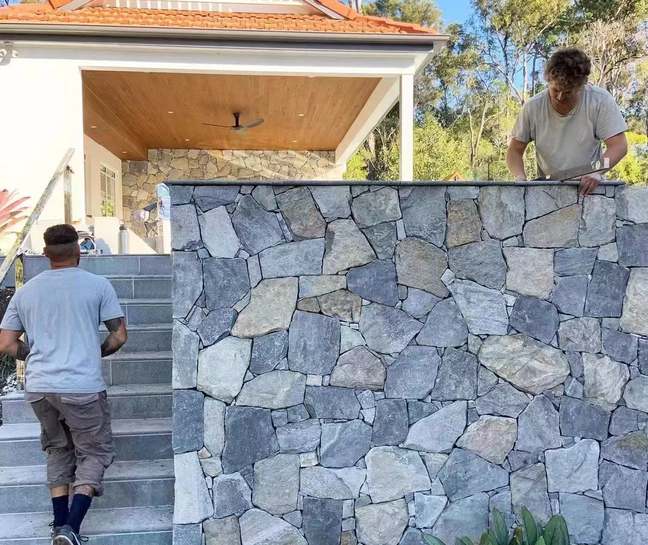
仕上げの仕上げとメンテナンス:長期にわたる美しさを確保します
適切な仕上げとメンテナンスは、あなたの美しさと完全性を維持するために不可欠です 不規則な自然 ランダムなゆるい石の設置 今後何年も。この章では、石の表面を最高の状態に保つために、クリーニング、シーリング、継続的なメンテナンスに関する重要なヒントを提供します。少しの注意は長い道のりを歩みます!
Regular maintenance and proper sealing techniques will significantly extend the life and beauty of your natural stone installation.”
Cleaning: Removing Excess Mortar and Debris
After the mortar has fully cured, remove any excess mortar and debris from the stone surface. Use a stiff brush and a mild detergent to scrub the stones gently. Avoid using harsh chemicals or abrasive cleaners, as these can damage the stone. Rinse the surface thoroughly with clean water. A clean surface is the first step to long-lasting beauty.
For stubborn mortar stains, try using a specialized mortar remover. Follow the manufacturer’s instructions carefully. Test the remover on a small, inconspicuous area first to ensure it doesn’t damage the stone. Pressure washing can also be effective, but use a low-pressure setting to avoid damaging the surface.
Sealing: Protecting Stone from Stains and Weather
Sealing the stone surface protects it from stains and weather damage. Choose a high-quality 天然石 sealer that is appropriate for the type of stone you have. Apply the sealer according to the manufacturer’s instructions. Typically, this involves applying a thin, even coat with a brush or roller. Top Source Stone offers advice on selecting the right sealing products.
Allow the sealer to dry completely before exposing the surface to water or traffic. Reapply the sealer every 1-3 years, depending on the level of exposure. Sealing is a crucial step in preserving the beauty and longevity of your stone installation. This will really make a difference.
Ongoing Maintenance: Regular Cleaning and Inspection
Regular cleaning and inspection are essential for ongoing maintenance. Sweep or vacuum the stone surface regularly to remove dirt and debris. Clean spills immediately to prevent staining. Inspect the surface periodically for cracks or damage. Addressing small issues promptly can prevent them from becoming larger problems.
Avoid using de-icing salts on stone surfaces, as these can damage the stone. Instead, use sand or gravel for traction. Trim any vegetation that is growing near the stone surface to prevent staining and moisture retention. Simple maintenance goes a long way.
Repairing Cracks and Damage: Addressing Common Issues
Cracks and damage can occur over time due to weathering or heavy traffic. Repair small cracks with a stone repair compound that matches the color of the stone. Follow the manufacturer’s instructions carefully. For larger cracks or damaged stones, consider replacing the affected area. Top Source Stone’s durable, high-quality stone requires minimal maintenance.
Remove any loose debris from the damaged area before applying the repair compound. Allow the repair compound to cure completely before exposing the surface to traffic. Consider hiring a professional for more extensive repairs. Addressing issues promptly preserves your project.
Maintenance Schedule for Irregular Stone
| Task | Frequency | Materials Needed | Estimated Time |
|---|---|---|---|
| Sweeping/Vacuuming | Weekly | Broom or vacuum | 15 minutes |
| Cleaning | Monthly | Mild detergent, stiff brush, water | 30分 |
| Sealing | Every 1-3 years | Stone sealer, brush or roller | 1〜2時間 |
| Inspection | Quarterly | None | 10 minutes |
| Crack Repair | As needed | Stone repair compound, trowel | 変化します |
結論
石の産業で15年後に、不規則な自然なランダムなゆるい石を設置することは、岩を敷くだけではないことを学びました。時代を超越した風景を作成することです。自信を持って自然の芸術を裏庭に持ち込むことです。
From my experience at Top Source Stone, the key to success lies in the details: proper planning, quality materials, and a bit of patience. Trust me; getting the foundation right is “where it’s at,” and ensures your project stands the test of time.
Remember, every stone tells a story, and with the right approach, you can create something truly unique. If you’re aiming for lasting beauty and a touch of nature, taking the time to do it right is always worth it.
よくある質問
Q1: What are the benefits of using irregular natural random loose stone for landscaping?
A1: Irregular natural random loose stones are excellent for landscaping due to their unique shapes that offer aesthetic appeal and visual interest. They are also durable, environmentally friendly, and add a natural look to your landscaping projects.
Q2: How do you install irregular natural random loose stone?
A2: 不規則な天然のランダムなゆるい石を設置するには、最初にコンパクトな砂利を使用して安定した水平なベースを準備します。希望のパターンに石を配置し、ぴったりとフィットします。小さな石や砂利で隙間を埋め、表面が均等であることを確認します。
Q3:ゆるい石を敷くために必要なツールは何ですか?
A3: シャベル、レーキ、コンパクターなどの基本的な造園ツールが必要です。さらに、ゴム製のマレットは石の調整に役立ち、レベルはそれらが均等に置かれることを保証します。
Q4:ゆるい石の道やパティオをどのように維持しますか?
A4: 定期的なメンテナンスには、破片の除去、シフトした可能性のある石の調整、そして時々新鮮な砂利を追加してギャップを埋めることが含まれます。頑丈さを維持するには、定期的な圧縮も必要になる場合があります。
Q5: Is irregular natural random loose stone suitable for high-traffic areas?
A5: Yes, with proper installation, irregular natural random loose stones can handle high traffic areas. Ensure they are well-compacted, and any gaps are filled with gravel for stability.
Q6: What are the environmental benefits of using natural stone?
A6: Natural stones are environmentally beneficial as they require minimal processing and can be locally sourced, which reduces the carbon footprint. They also don’t emit VOCs, making them an eco-friendly choice for construction.
Q7: Can irregular natural random loose stone be used indoors?
A7: Yes, these stones can be used indoors, often as wall cladding or flooring in areas like kitchens and bathrooms, providing a rustic, natural aesthetic.
Q8:プロジェクトに適した石をどのように選びますか?
A8: 意図した使用、望ましい美学、局所的な可用性、石の自然な耐久性と気象抵抗などの要因を考慮してください。石のサプライヤーとのコンサルティングは、お客様のニーズに最適なオプションに関する洞察を提供することもできます。
外部リンク
- ランダムなゆるい石:持続可能なデザインのための自然な選択
- 自然な不規則なランダムなゆるい石被覆ベニア
- 天然の旗の舗装に関するすべて – トップソーススレート
- 庭の足がかりの石|風景 & 屋外の足がかりの石
- 秋の茶色の不規則な足がかりの石 – 石の上
- 不規則な石の旗 – ストーンウッド製品
- あなたの屋外スペースのための天然石のクレイジーな舗装アイデア
- オハイオ州で販売されているフラッグストーン - ストーンセンター


